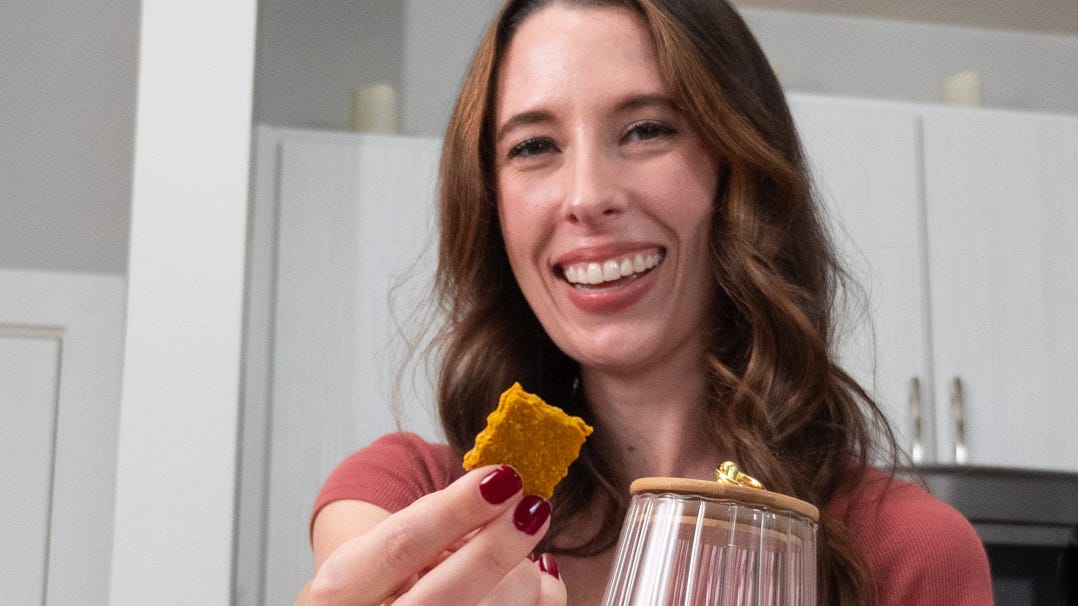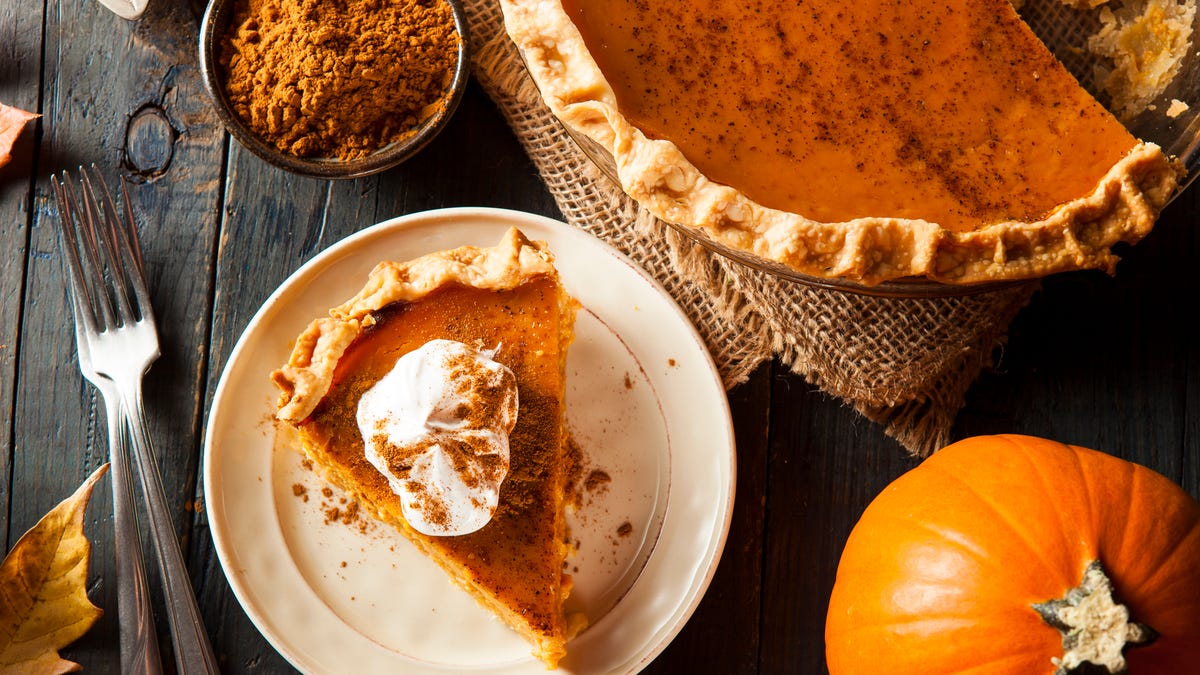
How to make dog treats with pumpkin
Have extra pumpkin? Turn it into a tasty treat for your dog.
Problem Solved
Few things say “fall favorite” quite like pumpkin. Whether you’re enjoying pumpkin waffles for breakfast, sipping a pumpkin spice latte for an afternoon pick-me-up or finishing your meal with a slice of pumpkin pie, most of us can’t get enough of this seasonal flavor from October through December.
“Pumpkin has become synonymous with fall as its warm, earthy flavor is comforting and pairs perfectly with fall spices like cinnamon, nutmeg and cloves,” says Lisa Young, a registered dietitian nutritionist and author of “Finally Full, Finally Slim.”
Here’s what pumpkin is, why it’s good for you and when it might be wise to go easy on your favorite pumpkin-flavored recipes.
What is pumpkin?
Pumpkin is part of the Cucurbitaceae (gourd) family, “the same plant family that includes squash, melons and cucumbers,” says Young. Botanically speaking, it’s a fruit because it contains seeds. “But in culinary terms, it’s treated as a vegetable because it’s savory and is often used in soups, roasted dishes and other savory foods,” explains Dr. Uma Naidoo, director of nutritional and lifestyle psychiatry at Massachusetts General Hospital and author of “Calm Your Mind with Food.”
It’s also known for being squash-like in texture, mildly sweet and subtly earthy, especially when cooked. Raw pumpkin, on the other hand, tends to be fibrous, bland or even mildly bitter, which is why it’s rarely eaten that way except when grated or puréed with added flavorings or sweeteners.
Pumpkins come in many varieties, from large field pumpkins (great for carving) to smaller, sweeter “sugar pumpkins” that are ideal for baking and cooking. Pumpkins are available fresh, canned or even frozen. “Canned pumpkin (without added sugars) can be an especially great addition to recipes,” says Young. “It’s also good for the digestive health of dogs.”
In the U.S., pumpkins are harvested from late summer through fall, with peak availability in October and November. Though native to the Americas, where Indigenous peoples cultivated them for thousands of years, pumpkins are now grown around the world, including in China, India, Ukraine, Spain and the U.S.
Is pumpkin good for you? Can you eat raw pumpkin?
No matter where it’s grown, pumpkin is a nutritional powerhouse. Its deep orange color signals high levels of carotenoids like beta-carotene, which the body converts to vitamin A. “Pumpkin is one of the richest sources of beta-carotene–derived vitamin A, which supports vision, immunity and skin health,” says Naidoo. Indeed, just one cup of cooked pumpkin provides more than 200% of the recommended daily value.
Pumpkin also contains plenty of vitamin C, “which helps boost immune defenses and supports skin health,” says Young, plus vitamin E, vitamin K, several B vitamins and magnesium. “Its vitamin E provides antioxidant protection, and its B vitamins are important for energy metabolism,” says Naidoo. It’s also a good source of potassium, “which aids in maintaining healthy blood pressure and muscle function,” adds Young.
A cup of pumpkin delivers roughly 3 grams of fiber as well, which supports digestion, helps regulate blood sugar and promotes fullness, all while being low in calories (around 49 per cup) and virtually fat-free. Together, Young says these traits make pumpkin a great choice for healthy weight management.
As for raw pumpkin, you can eat it that way, though its tough texture and slightly higher risk of bacterial contamination (especially in the seeds) often make cooked versions safer and more palatable. “Some people may also find raw pumpkin harder to digest,” notes Naidoo. Cooking, in contrast, softens the flesh, improves flavor and reduces microbial risk.
“And don’t forget pumpkin seeds,” she adds. “They’re nutrient-dense sources of protein, magnesium, zinc and healthy fats.”
Can you eat pumpkin every day?
Pumpkin is safe and beneficial for most people when enjoyed in moderation, but there are a few caveats.
For one, its high fiber content, while healthy, can cause bloating or gas in large amounts, especially for those individuals with sensitive digestion or conditions such as irritable bowel syndrome (IBS) or inflammatory bowel disease (IBD). “If you have gastrointestinal issues, consult a doctor or nutritionist before eating too much pumpkin,” advises Naidoo.
Many popular pumpkin-flavored foods such as pies, lattes or pumpkin rolls “can be loaded with added sugars, creams, fats and refined carbs,” cautions Young. “These extra calories and sweeteners can certainly offset its benefits.”
And because pumpkin is relatively high in potassium, people with kidney disease or those on potassium-altering medications should monitor intake, says Naidoo. Pumpkin can act as a mild diuretic, so large quantities might also affect fluid balance or interact with certain medications, such as lithium.
So long as you keep such considerations in mind, “you can enjoy pumpkin throughout the fall as part of a healthy diet,” says Naidoo. “Just be cautious when selecting pumpkin baked goods, cakes, pies or seasonal lattes and read the ingredients list to check the amount of added sugar.”
